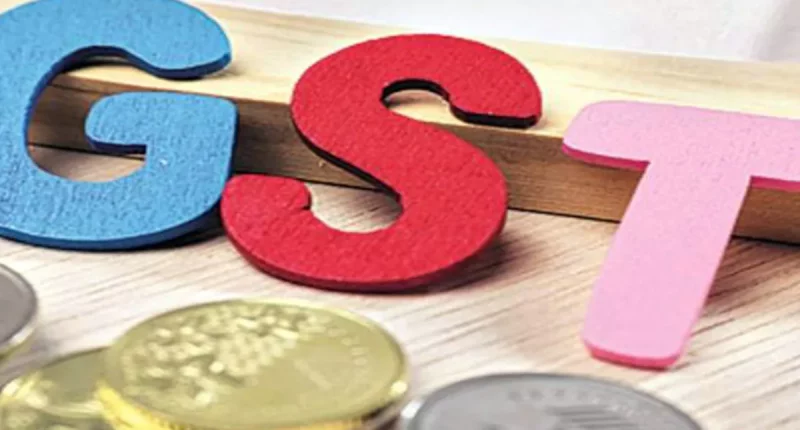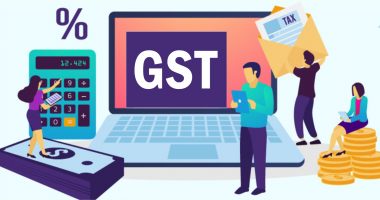The CBIC has launched the automated return scrutiny module for GST returns this month, based on directions from the Union Minister of Finance, Smt Nirmala Sitharaman. The automated return scrutiny module has been integrated with the ACES-GST backend application and will auto-select GST returns for scrutiny based on risk parameters predefined by the system.
This move will streamline communication between the GST officers and taxpayers, saving time and effort for both parties involved. It also allows for a more transparent and efficient adjudication process, minimises tax evasion, and increases overall compliance.
How will the Automated Return Scrutiny Module work?
Through the automated return scrutiny module, any discrepancies due to risks associated with a GST return will be flagged, triggering an automated notice sent out to the taxpayer in Form ASMT-10. Further, an alert will be sent out to the concerned tax officer, who is then provided with a workflow for interacting with the taxpayer through the GST common portal. The automated module has already begun with the scrutiny of GST returns from FY 2019-20.
Once intimated in Form ASMT-10, taxpayers may reply to the notice using Form ASMT-11 on the GST portal. If the tax officer finds that the action taken and response by the taxpayer is satisfactory, they will acknowledge the same in Form ASMT-12. If not, the officer can proceed to issue a show-cause notice or initiate an audit or investigation.
How does automated return scrutiny affect GST filers?
Automated return scrutiny will heighten the chances of tax filers’ returns being picked up for scrutiny as even minute errors and discrepancies will now be flagged by the system. Previously, it was up to the discretion of the GST officer to send out a notice. Now, with automated return scrutiny, taxpayers that have mismatches in their GST returns that exceed the tolerance limits imposed by the GSTN could receive a scrutiny notice. This could cause a rise in the number of government notices, and the cost of non-compliance is definitely expected to go up.
What are the different risk parameters for GST returns being subjected to scrutiny?
In 2022, the government released an indicative list of parameters based on which GST returns may be picked up for scrutiny. Here are 15 situations that could cause taxpayers to be subjected to a scrutiny notice. However, it is important to note that this list is not exhaustive.
- If the tax liability reported under Tables 3.1(a) and (b) of the GSTR-3B exceeds the tax liability reported in Tables 4,5,6,7A(1),7B(1),11A and 11B of the GSTR-1.
- If the tax liability in respect of reverse-charge (RCM) supplies in Table 3.1(d) of the GSTR-3B is less than the liability declared in Tables 4(A)(2) and 4(A)(3) of the GSTR-3B.
- If the tax liability in respect of RCM supplies in Table 3.1(d) of the GSTR-3B is less than the input tax credit (ITC) availed in Tables 3 and 5 of the GSTR-2A (net of amendments in Tables 4 and Table 6).
- If the tax liability offset in cash pertaining to the RCM supplies as per column 8 of Table 6.1 of the GSTR-3B is less than the liability declared in Table 3.1(d) of the GSTR-3B.
- If the ITC availed in respect of inward supplies from an Input Service Distributor (ISD) in Table 4(A)(4) of the GSTR-3B is more than the ITC available in Table 7 of the GSTR-2A (net of amendments in Table 8).
- If the ITC availed under ‘All other ITC’ in Table 4(A)(5) of the GSTR-3B exceeds the eligible ITC available in Tables 3 and 5 of the GSTR-2A (net of amendments in Tables 4 and 6).
- If the taxable value on account of outward taxable supplies in Table 3.1(a) of the GSTR-3B is less than the net amount liable for TCS and TDS credit under Column 6 of Table 9 of the GSTR-2A.
- If the liability on account of outward supplies in Tables 3.1(a) and 3.1(b) of the GSTR-3B is less than the tax liability as declared in the e-way bills.
- If the ITC availed in regard to the import of goods in Table 4(A)(1) of Form GSTR-3B is more than the ITC available in Table 10 and Table 11 of the GSTR-2A or the details available on the ICEGATE portal.
- Where the relevant GSTR-3B returns of the respective suppliers are not filed, and ITC relating to such invoice or debit note has been claimed in the recipient’s GST returns.
- Where ITC is claimed after the effective date of cancellation of registration of a supplier.
- Where ITC has been claimed in respect of invoices/debit notes issued by suppliers that have not filed their GSTR-3B returns for the relevant tax period.
- Where the GSTR-3B of a tax period is filed after the last date for claiming ITC in respect of any invoice or debit note as per Section 16(4), i.e. 30th November of the year following the financial year or the filing of the annual return, whichever is earlier. In such a case, no ITC shall be availed in the return.
- Where the taxpayer has not made reversals of ITC in accordance with the provisions of Rule 42 and Rule 43 of the CGST Rules. Rule 42 of the CGST determines ITC in respect of inputs/input services and reversal thereof, and Rule 43 determines ITC in respect of capital goods and reversals thereof in certain cases.
- Where interest/late fees are payable as per the Central Goods and Services Tax Act and the same has not been paid.
How can taxpayers avoid being at risk of scrutiny notices?
Taxpayers are also expected to improve their own compliance measures in the form of GST-compliant invoicing, timely return filing, and frequent and robust data reconciliations. All tax filers will also need to streamline the GST reporting and documentation process. A proper audit trail will need to be maintained. It is crucial that tax filers take action before filing returns, as this will help them avoid coming under the radar of the automated scrutiny system.
Some of the GST solutions and tools that would benefit taxpayers and minimise their risk of receiving a scrutiny notice are end-to-end integrated and automated GST filing, inbuilt and automated data reconciliations, comprehensive reporting dashboards, inbuilt vendor communication, proactive error checks, and an automated notice management system.
For any clarifications/feedback on the topic, please contact the writer at athena.rebello@clear.in

I’m a Chartered Accountant by profession and a writer by passion. ClearTax lets me be both. I love travel, hot tubs, and coffee. I believe that life is short, so I always eat dessert first. Wait.. life is also too short to be reading bios… Go read my articles!




